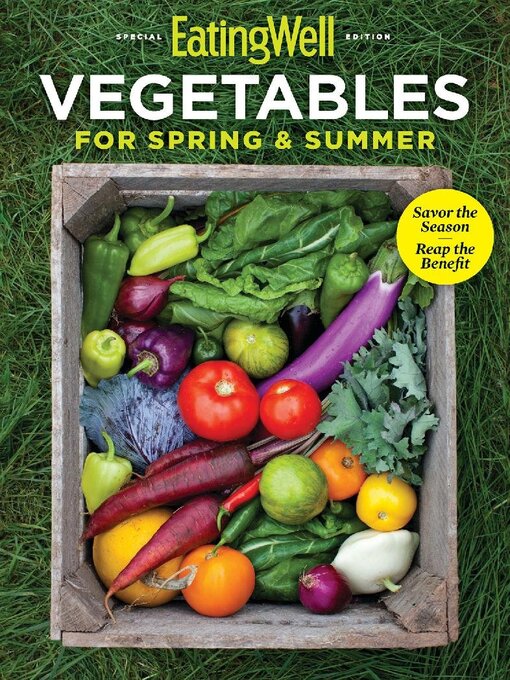EatingWell Vegetables for Spring and Summer guides you through the world of warm weather produce, including facts, shopping notes, and cooking tips on 100 vegetables, from artichokes to watercress, with notes on growing or purchasing the best produce possible. Organized alphabetically by vegetable, the book includes information on seasonality and the health benefits of each vegetable, including recipes with complete nutrition analysis, all tested in the EatingWell Test Kitchen. Each chapter gives core information on preparation, including roasting, steaming, or sautéing each vegetable perfectly. We also include tips to make summer’s produce last all year long with advice on freezing for freshness.
TITLE PAGE
Eating More Veggies, and Loving It • Your mother was right: you should eat them. Power up your plate with more of the season’s best produce.
Artichokes • These fiber-packed vegetables help encourage healthy gut bacteria and ease digestion woes. Artichokes might seem like a lot of work, but the tender meat is well worth the effort.
Arugula • Best in spring, arugula contains erucin, a compound that may guard against breast cancer by preventing cancer cells from dividing and multiplying.
Avocados • Hass avocados are available year-round, with best quality between midsummer and early fall. Florida avocados are in season from early summer to midwinter.
Beans, Shell • Fresh shell beans are lovely as a side dish or main dish and are often braised in an aromatic liquid. Favas are best in spring, but seek out other varieties in late summer to early fall.
Beans, Snap • Silicon is critical for strong bones, yet few foods provide high amounts of this mineral. Enter snap beans. They’re a top source. You can also get silicon from bananas and carrots.
Chard • This earthy-tasting green is a nutritional powerhouse. Cook up the stalks as well as the leaves to enjoy every tasty and beneficial bit of this vegetable.
Corn • Boiled, steamed, microwaved, grilled, roasted, sauteed or even eaten raw, sweet corn is a quintessential summer food that deserves a place at every cookout.
Cucumbers • Fast-growing cucumber varieties produce fruit 50 to 70 days after they are planted in spring, providing a crisp supply all summer. Enjoy in salads or a fresh dip.
Eggplant • A tropical and subtropical plant that thrives in warm or hot weather and sandy soil, this seedy vegetable is at its best from midsummer to early fall.
Garlic • A staple in cuisines from around the globe, garlic is packed with allicin, a natural blood thinner that promotes heart health by preventing blood clots from forming.
Lettuces • From mesclun to butterhead, lettuces and other green varieties are the base of any salad. Toss greens with fruits, nuts and cheese for a can’t-miss salad formula.
Okra • These vegetable pods thrive in hot, steamy weather and are at their best in peak season from mid- to late summer in most parts of the country.
Parsnips • Eat one parsnip and you’ll rack up 40% more blood-pressure-lowering potassium than you’d get from a banana. These sweet root vegetables are best in spring.
Peas • Technically legumes, peas are a key source of nutrients that support heart health, especially fiber and vegetable protein. Toss a cup of them into pasta, rice or quinoa.
Peppers • Sweet bell peppers are easy to find in any supermarket and can be used in many meals. Fiery hot chiles are staples in global cuisine and can bring some zing to dinnertime.
Radishes • Round and red may be the first descriptors that come to mind when ruminating on radishes, but these crisp and peppery roots come in a gorgeous array of shapes and colors.
Spinach • This versatile and leafy green packs a nutritional punch and comes in...

